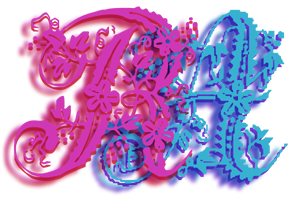
Please support if you like my work by payment through upi: sinhamit@icici or payment by bank
account name: Amit Kumar Sinha,
account number: 2646728782
IFSC code: KKBK0005660
SWIFT: KKBKINBB
Required Software in Category: HTML by amit
🕙 Posted on 2023-03-28 at 06:01:10 Read in Hindi ...
Additional software?
When you install or unzip / extract the downloaded VSCode software, from authenticated source (MicroSoft official website), you will be ready to create a new project folder and other files and folders inside it.
Now you should also install XAMPP software from apachefriends.org. Always verify that you download any software from authenticated source. You should also check the requirements regarding installation of these softwares. If your personal computer (PC - Windows, Linux or Mac) does not support these requirements, you can download older version of XAMPP from the link provided in apachefriends.org
XAMPP is X (x refers to any OS: Windows, Linux, or Mac), Apache, MariaDB (previously MySQL), PHP, Perl. XAMPP is completely free software. However, when you install xampp on your PC, you will work on MySQL database. Other similar softwares are also available, for example, WAMPServer, MAMP & MAMP pro, LAMP, etc. Some of these softwares are not free and may have additional enhanced features.
Why should I download XAMPP or another software, similar to it?
When you are involved in learning WEB Applications and creating websites, you have to learn many scripting and programming languages as explained before.
You have to learn html, CSS, JavaScript, PHP collectively to learn in precise and concise way. Learning PHP is as easy as learning HTML. I personally feel that learning JavaScript is more difficult than learning PHP.
However, you have to learn all of these scripting languages collectively or separately, and afterwards you can learn many other programming languages, as per your requirements.
Request Response Cycle and
Difference between PHP and JavaScript
When any person requests a website (from his/her PC or mobile phone) through a web browser or another software (bot), the REQUEST-
ICANN: details
The Internet Corporation for Assigned Names and Numbers (ICANN) is an internationally organized, non-profit corporation that has responsibility for Internet Protocol (IP) address space allocation, protocol identifier assignment, generic (gTLD) and country code (ccTLD) Top-Level Domain name system management, and root server system management functions. [source: ICANN]
And when this request-
JavaScript is a CLIENT-side scripting language, and PHP is a SERVER-side scripting languages. It means that when the request-HTML or PHP file stored in SERVER starts processing and downloaded on the web browser. Many (old) websites may be non-dynamic (static) by design, and can be stored with .html file extension. These files, along with style-sheets, and JavaScript files are not processed and downloaded directly to the web-browser.
PHP is a dynamic scripting language, and when a PHP file (stored at SERVER) is requested, it is not downloaded directly to the web browser. Instead, it is processed by the SERVER, and data is fetched from the database. Then it is downloaded as an html file, though web browser address shows .php in the file name.
When processing of PHP files is completed, and all files are downloaded to the web-browser, the request-
But, JavaScript is a client-side scripting language, and therefore, it is capable of rendering WEB-PAGE as soon as network connection is restored or SERVER load is reduced. This can be achieved by AJAX and JSON speciality of JavaScript. For this only JavaScript file necessary to start AJAX connection is required.
In both cases described above, either working with PHP or working with JavaScript, along with AJAX and JSON, you need a local SERVER installed on your computer, that is, Apache. Apache and MySQL services, are installed when XAMPP is installed. You have to click from right-
Now, before starting any services, you should click on × button(s) on the left side, to install those services on your computer. Then, whenever you start / restart your computer, those services will automatically be started. And, you do not need to start these services Apache and MySQL separately.
Leave a Comment:

Amit Sinha March 2nd, 2023 at 9:30 PM
😃 😄 😁 😆 😅 😂 😉 😊 😇 😍 😘 😚 😋 😜 😝 😶 😏 😒 😌 😔 😪 😷 😵 😎 😲 😳 😨 😰 😥 😢 😭 😱 😖 😣 😞 😓 😩 😫 😤

Ribhu March 3rd, 2023 at 9:30 PM
🐵 🐒 🐶 🐩 🐺 🐱 🐯 🐅 🐆 🐴 🐎 🐮 🐂 🐃 🐄 🐷 🐖 🐗 🐽 🐏 🐑 🐐 🐪 🐫 🐘 🐭 🐁 🐀 🐹 🐰 🐇

